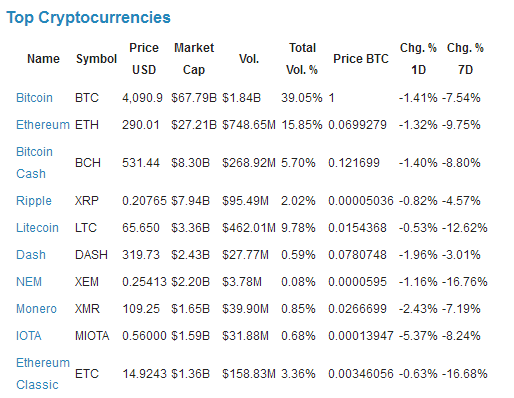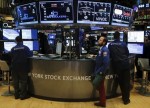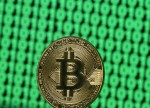
- All Instrument Types
- Indices
- Equities
- ETFs
- Funds
- Commodities
- Currencies
- Crypto
- Bonds
- Certificates
Please try another search

Job Openings Increase To Highest Level In 17 Years

DOW + 61 = 22,118.86
SPX + 8 = 2496
NAS + 22 = 6454
RUT + 8 = 1423
10 Y + .05 = 2.17%
Oil + .07 = 48.30
Gold + 4.40 = 1332.40

The last time the Dow hit a record high was August 7 at 22,118.42. Since then, the market has had a few startling declines. And yes, stocks are expensive at these levels, and you must think the market might be susceptible to Fed tightening, or some sort of exogenous event, but today, the world to not explode, so it’s all good, until it isn’t.
The monthly Job Openings and Labor Turnover Survey, or JOLTS, released by the Labor Department showed the labor market continued to tighten even as job openings rose to a record high in July. Skilled labor and experienced workers are in short supply.
Job openings, a measure of labor demand, increased by 54,000 to a seasonally adjusted 6.2 million. The highest level in 17 years. Job openings have now been above 6 million for two straight months. Hiring increased 69,000 to 5.5 million in July, lifting the hiring rate to a near 1-1/2-year high of 3.8 percent from 3.7 percent in June.
About 3.2 million Americans voluntarily quit their jobs in July, up from 3.1 million in June. The quits rate is a measure of job market confidence. People leave one job to take another, hopefully better job. Part of the problem with the labor market is that firms have not been willing to pay to attract workers, and so workers stay in their current job.
The JOLTS data signal that the labor market was in solid shape in July. However, we could see a drop in the monthly jobs report due to disruptions from Hurricanes Harvey and Irma. Still the JOLTS data should be enough to bolster the Federal Reserve’s position that the labor market has largely recovered.
A separate report from the National Federation of Independent Business showed a record share of small businesses in August ranked difficulties finding qualified workers as “their top business problem.” The rise in job vacancies in July bolsters views that August’ s moderation in job gains was largely because of a seasonal quirk.
The Census Bureau report median household income in America was $59,039 last year, surpassing the previous record of $58,655 set in 1999. The figure is adjusted for inflation. The Census said the uptick in earnings occurred because so many people found full-time jobs last year, rather than a big increase in wages.
America’s poverty rate fell to 12.7 percent, the lowest since 2007, the year before the financial crisis hit. The percent of Americans without health insurance for the entire year also dropped in 2016 to just 8.8 percent, the lowest ever, largely thanks to expanding coverage under the Affordable Care Act. Some 28.1 million people lacked health insurance in 2016, down from 41.8 million in 2013.
So, one of the big reasons why there is less poverty is because of safety net programs, not because of increased wages. Social Security, for example, reduced the number of people in poverty by 8.15 percent last year; refundable tax credits like the EITC reduced the number of people in poverty by 2.55 percent.
Even though the median household income is at the highest level since 1999 and even though the number is adjusted for inflation, it may not mean that Americans are earning more because the Census Bureau has changed the methodology for calculating the data. The Economic Policy Institute crunched the Census data to account for the change. The 2016 median income figure remains 1.6% below its 2007 level and 2.4% below where it was in 1999.
There are still big disparities between race and class. Median income for African-American households was only $39,490 last year, far lower than $65,041 for whites. Asians fared the best, earning $81,431. The rich also continue to get wealthier, while the nation’s poorest families, the bottom 20 percent who earn $24,000 or less, remain worse off financially than they were in 1999.
The CoreLogic Home Price Index shows home prices nationwide, including distressed sales, increased year over year by 6.7 percent in July 2017 compared with July 2016 and increased month over month by 0.9 percent in July. In Arizona, home prices increased 6.2% year-over-year and 0.6% month-over-month.
While mortgage interest rates remain low, there are growing concerns about affordability as one-third of the top US cities are now considered overvalued. It is interesting to consider that home prices have been rising much higher and faster than incomes. It would be nice if we could switch that and have incomes growing faster than housing prices, or at least keep pace.
U.S. News & World Report released its new college and university rankings. Princeton University topped the national university list for the seventh straight year, and Williams College led the liberal arts list for the 15th straight year. Cal-Berkeley and UCLA shared top honors for public universities.
Some 16 million people in Florida have no electricity. While some homes may see power restored within days, utilities said that other customers may have to wait weeks. Florida Power & Light plans to send out 16,000 workers, including crews on loan from other utilities. The company has also deployed drones to assess problems from the air.
The storm brought havoc to Georgia and South Carolina as well. More than 500,000 people evacuated Georgia’s coastal communities, some of which saw storm surge running through their streets. Six deaths in Florida have been blamed on Irma, along with three in Georgia and one in South Carolina. At least 35 people were killed in the Caribbean last week.
Never waste a crisis. The thinking is that economic fallout from the Hurricanes Harvey and Irma would only raise the sense of urgency to bring some type of tax relief to businesses and consumers. Trump has pushed for slashing the corporate tax rate to as low as 15% from a top rate of 35%, but Congress is reportedly looking to split the difference. Negotiations between the White House and Congress appear to be focusing on a rate closer to 23%, according to the Washington Post. Or perhaps a bit higher.
Asked if a 15% goal was feasible, Treasury Secretary Steven Mnuchin said at a hedge-fund conference, “I don’t know if we will be able to achieve that.” The big question: How to pay for it?
The White House has floated the idea of killing of certain loopholes such as a tax break for Wall Street hedge-fund managers and even possibly ending the popular deduction for mortgage interest. Yet congressional leaders have told the White House the mortgage deduction is off limits. A major reduction in the corporate rate would increase deficits.
Apple (NASDAQ:AAPL) unveiled the new iPhone X, but we are all expected to say “ten” instead of “X”. It is not the tenth iteration of the iPhone, but it will mark the tenth anniversary, even though it seems iPhones have been with us much longer. It will feature a faster processor, better camera, no home button, Face ID, wireless charging, an edge-to-edge display and augmented reality. And a $999 price tag. You do not have to pay full retail.
Apple also announced the iPhone 8 and 8 Plus will go on sale this month; they are also new phones or at least updated, and cheaper than the X, but it seems unlikely they will be the big sellers. Also, a new Apple watch and Apple 4K television. The iPhone X won’t be available for pre-order until October 27. It is expected to begin shipping by November 3.
Apple’s annual iPhone event also marked the public’s first look at Apple’s new “spaceship” headquarters in Cupertino. While the main campus wasn’t available to the press to tour, Apple hosted its iPhone keynote underground at the new Steve Jobs Theater, an all-glass enclosure that cost around $14 million to build.
Executives from JPMorgan Chase (NYSE:JPM), Bank of America (NYSE:BAC) and Goldman Sachs (NYSE:GS) warned that trading conditions during the third quarter were likely to be poor for their banks. Revenue from trading of stocks and bonds continues to suffer from decreased market activity and volatility. Bank of America sees revenue from trading stocks and bonds likely to decline around 15 percent in the third quarter compared with the year-ago period.
JPMorgan CEO Jamie Dimon gave an even more downbeat forecast for his bank, predicting a 20 percent drop in trading revenue. Goldman execs said conditions for fixed-income trading have not improved much since the beginning of the year, but he declined to be specific.
Related Articles

Tesla (NASDAQ:TSLA) (NYSE: TSLA), the electric vehicle giant, has recently experienced a significant drop in its stock value, which has fallen nearly 45% since December. This...

Through many years of frustration among gold bugs due to the failure of gold stock prices to leverage the gold prices in a positive way, there were very clear reasons for that...

I know there is the smell of fear in the air when I see my readership double as we reach a point where weekly chart factors come into play. Up until last week, markets have...
Are you sure you want to block %USER_NAME%?
By doing so, you and %USER_NAME% will not be able to see any of each other's Investing.com's posts.
%USER_NAME% was successfully added to your Block List
Since you’ve just unblocked this person, you must wait 48 hours before renewing the block.
I feel that this comment is:
Thank You!
Your report has been sent to our moderators for review





Add a Comment
We encourage you to use comments to engage with other users, share your perspective and ask questions of authors and each other. However, in order to maintain the high level of discourse we’ve all come to value and expect, please keep the following criteria in mind:
Enrich the conversation, don’t trash it.
Stay focused and on track. Only post material that’s relevant to the topic being discussed.
Be respectful. Even negative opinions can be framed positively and diplomatically. Avoid profanity, slander or personal attacks directed at an author or another user. Racism, sexism and other forms of discrimination will not be tolerated.
Perpetrators of spam or abuse will be deleted from the site and prohibited from future registration at Investing.com’s discretion.